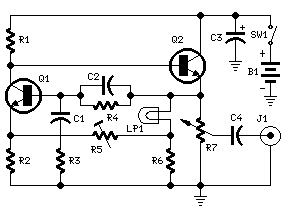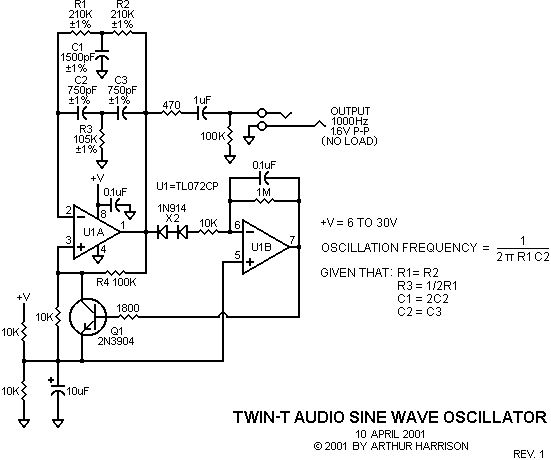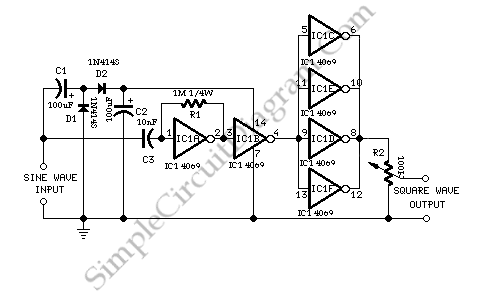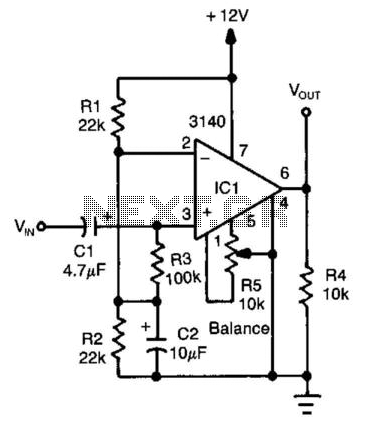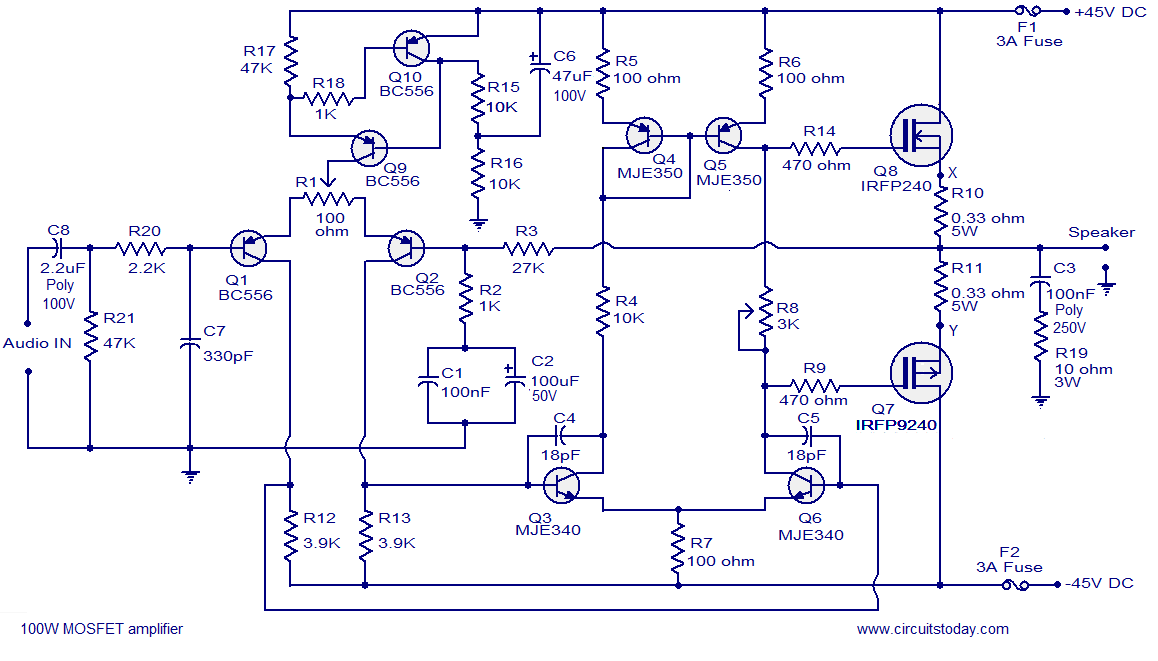
100W SINE AT 60Hz

The circuit primarily comprises a 60-Hz sine-wave oscillator featuring a 10K frequency-control potentiometer, two buffering stages, and a push-pull power amplifier. This design effectively addresses the noise issues associated with square-wave inverters, particularly when powering a 115-V radio receiver or cassette player in an automotive environment.
The circuit is fundamentally structured around a sine-wave oscillator that operates at 60 Hz, which is the standard frequency for most electrical devices in North America. The inclusion of a 10K frequency-control potentiometer allows for fine-tuning of the oscillator frequency, ensuring stability and precision in the output waveform.
Following the oscillator, the circuit includes two buffer stages. These buffer stages serve to isolate the oscillator from the load, providing impedance matching and preventing any loading effects that could distort the sine wave signal. The buffers also enhance the drive capability of the circuit, allowing for better performance under varying load conditions.
The push-pull power amplifier is a critical component in this circuit, as it amplifies the sine wave signal generated by the oscillator to a level suitable for driving loads such as a 115-V radio receiver or cassette player. The push-pull configuration is advantageous as it allows for efficient amplification with reduced distortion, particularly important when aiming to maintain the integrity of the sine wave output.
This circuit design is particularly beneficial in automotive applications, where the elimination of noise is crucial for maintaining audio quality. The sine-wave output produced by this inverter is significantly cleaner than that of a square-wave inverter, making it suitable for sensitive electronic equipment that may be adversely affected by voltage spikes or harmonics present in square-wave outputs.
In summary, this circuit effectively combines a sine-wave oscillator, buffering stages, and a push-pull amplifier to produce a reliable and noise-free power source for automotive audio devices.Consists essentially of 60-Hz sine-wave oscillator with 10K frequency-control pot, two buffer stages, and push-pull power amplifier. Circuit eliminates noise problems of square-wave inverters when operating 115-V radio receiver or cassette player in car.- G.
C. Ford, Power Inverter with Sine Wave Output, 73 Magazine, May 1973, p 29-32.. 🔗 External reference
The circuit is fundamentally structured around a sine-wave oscillator that operates at 60 Hz, which is the standard frequency for most electrical devices in North America. The inclusion of a 10K frequency-control potentiometer allows for fine-tuning of the oscillator frequency, ensuring stability and precision in the output waveform.
Following the oscillator, the circuit includes two buffer stages. These buffer stages serve to isolate the oscillator from the load, providing impedance matching and preventing any loading effects that could distort the sine wave signal. The buffers also enhance the drive capability of the circuit, allowing for better performance under varying load conditions.
The push-pull power amplifier is a critical component in this circuit, as it amplifies the sine wave signal generated by the oscillator to a level suitable for driving loads such as a 115-V radio receiver or cassette player. The push-pull configuration is advantageous as it allows for efficient amplification with reduced distortion, particularly important when aiming to maintain the integrity of the sine wave output.
This circuit design is particularly beneficial in automotive applications, where the elimination of noise is crucial for maintaining audio quality. The sine-wave output produced by this inverter is significantly cleaner than that of a square-wave inverter, making it suitable for sensitive electronic equipment that may be adversely affected by voltage spikes or harmonics present in square-wave outputs.
In summary, this circuit effectively combines a sine-wave oscillator, buffering stages, and a push-pull amplifier to produce a reliable and noise-free power source for automotive audio devices.Consists essentially of 60-Hz sine-wave oscillator with 10K frequency-control pot, two buffer stages, and push-pull power amplifier. Circuit eliminates noise problems of square-wave inverters when operating 115-V radio receiver or cassette player in car.- G.
C. Ford, Power Inverter with Sine Wave Output, 73 Magazine, May 1973, p 29-32.. 🔗 External reference
